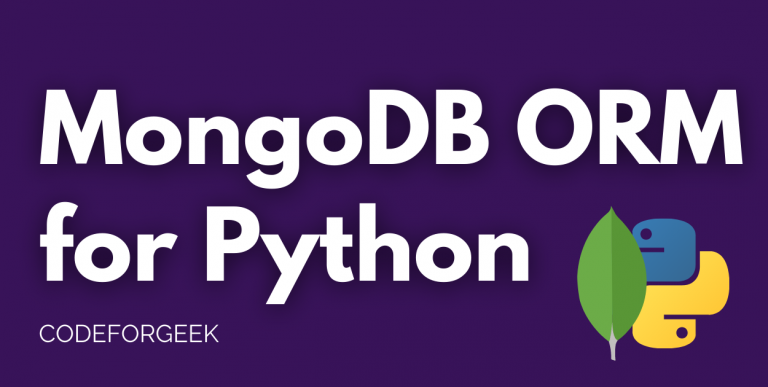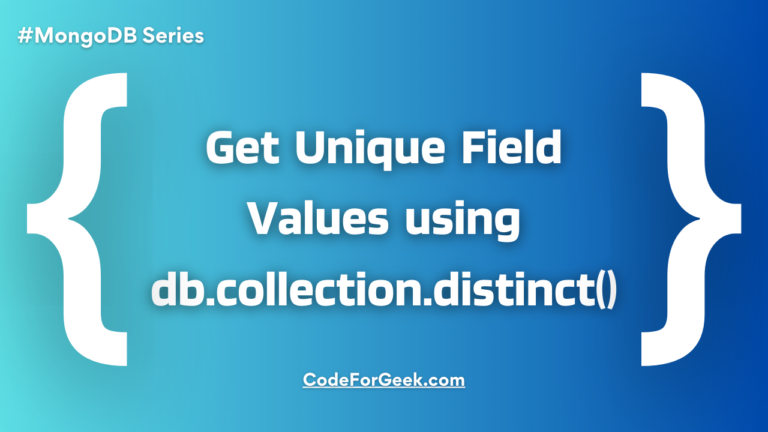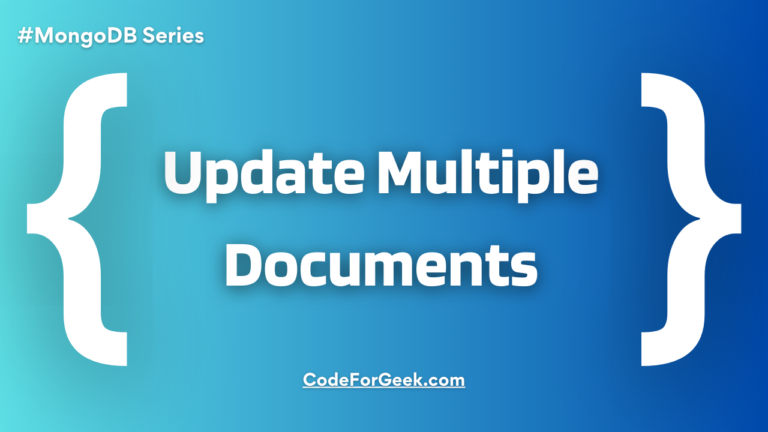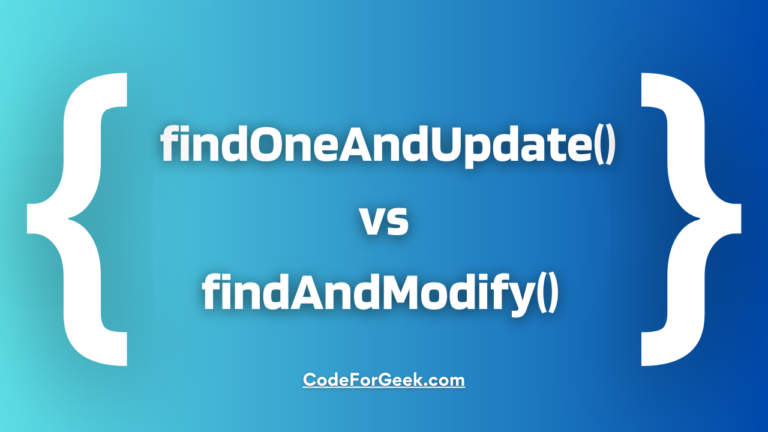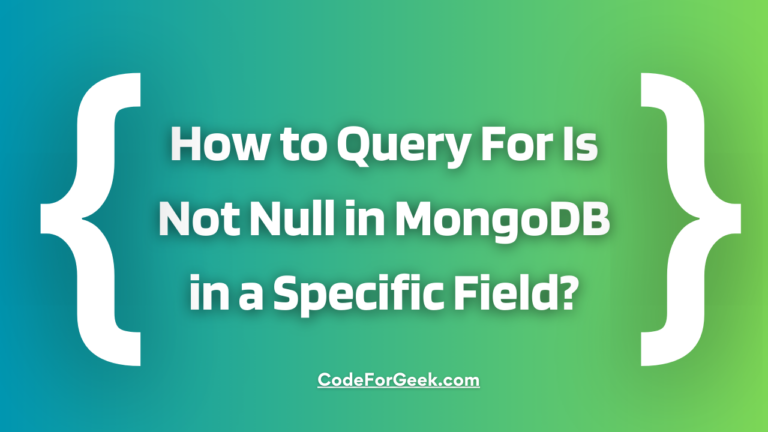Are you a Python developer looking around for a MongoDB ORM for Python for your amazing application? Then this tutorial is just for you!
The popularity of MongoDB has grown over time, especially as a robust database management system. There’s no denying it – MongoDB is sometimes a challenge for beginners. There are a number of drawbacks to the components, in addition to the complexity of the documentation.
Now that you have decided to go with MongoDB with Python, you will surely need something called an ORM or ODM. An ORM or object-relational mapper also known as an ODM or object document mapper is used to easily work with a programming language or its framework and a NoSQL database together and faster.
Python, being an old yet powerful programming language can produce more powerful applications when bundled with a powerful NoSQL database service like MongoDB. To make lives easier ODMs were introduced. Most MongoDB ORM for Python solve the same problem, yet they differ for a variety of reasons. They also have different levels of scope and complexity.
In this guide, I will cover the top MongoDB ORM for Python for you so you can choose from the best one suitable for your application. Let us now start with this informative guide!
What is an Object-Relational Mapper (ORM)?
In a no-SQL database such as MongoDB, a document mapper, or object document mapper, maps objects with a document-based database. A developer can easily define a schema for documents inside collections using an object document mapper to be able to store data. This simplifies the process of understanding and managing data.
This allows individuals to categorize documents within collections well, thus improving data representation. With an ODM, users can also easily add new properties and fields to existing documents without modifying anything else.
When used with Python or any of its frameworks like Django or Flask, we use a MongoDB ORM for Python. I will help you choose the best by listing a few top MongoDB ORM for Python.
Top MongoDB ORM for Python
So, let us get started with the top MongoDB ORM for Python lists
1. PyMongo
The PyMongo MongoDB ORM for Python is a native and highly popular Python driver for MongoDB. It supports MongoDB versions MongoDB 2.6, 3.0, 3.2, 3.4, 3.6, 4.0, 4.2, 4.4, and 5.0. The package is essentially built to provide Python developers with all the right tools to interact with a MongoDB database.
The PyMongo package was authored by Mike Dierolf and is maintained by Bernie Hackett.
Installation
- Install the package from PyPi with PIP using the below command:
$ python -m pip install pymongo
- For an easy_install using setuptools, you can pass the below command:
$ python -m easy_install pymongo
- Or, if you have downloaded the project source, you can simply run the below command:
$ python setup.py install
For more information on the PyMongo MongoDB ORM for Python, visit the official docs of this package here.
2. Mongokit
Using MongoKit as a gateway to the great PyMongo driver adds a schema layer and validation. This MongoDB ORM for Python has gained immense popularity across many Python-MongoDB users. The KISS and DRY principles have been followed throughout, making this document as simple and light as possible.
It was aimed to be made as simple, faster, and powerful as possible by the authors even with the inclusion of all those features a MongoDB ORM for Python should have. Some of them are, random query support, polymorphism and inheritance, custom validators, untyped field support, and the list goes on.
Installation
- Install the package from PyPi with PIP using the below command:
$ pip install mongokit
For more information on the Mongokit MongoDB ORM for Python, visit the official docs of this package here.
3. Motor
The Motor ODM is yet another popular Python driver for MongoDB. Utilizing the full advantage of modern hardware, Motor can process thousands of requests per second. It offers users with co-routine-based APIs for non-blocking access to MongoDB.
It is specially designed to work with Tornado and Asyncio applications in Python. This MongoDB ORM for Python is authored by A. Jesse Jiryu Davis.
Installation
- Install the package from PyPi with PIP using the below command:
$ pip install motor
For more information on the Motor MongoDB ORM for Python, visit the official docs of this package here.
4. Beanie
Beanie is a powerful and asynchronous ODM for MongoDB that is based on Motor and Pydantic. Beanie makes it easier for Python developers to add, delete, update, or read data from a collection inside a document.
It supports out-of-the-box migration systems of data and schema. This ODM is authored by a user named Roman Right on GitHub.
Installation
- Install the package from PyPi with PIP using the below command:
$ pip install beanie
- Install the package from Poetry using the below command:
$ poetry add beanie
For more information on the Beanie MongoDB ORM for Python, visit the official docs of this package here.
5. Minimongo
Minimongo is designed with the aim to offer Python developers with a lightweight, schemaless, minimal, and a Pythonic object-oriented model management for MongoDB. You can make this ODM work with an existing schema or even from third-party Python apps.
This package is authored by Steve Lucy.
Installation
- Install the package from setuptools:
$ easy_install -U minimongo
- Install the package from GitHub and run command:
$ python setup.py install
For more information on the Minimongo MongoDB ORM for Python, visit the official docs of this package here.
6. MongoEngine
Lastly, I would like to cover the MongoEngine MongoDB ORM for Python. This is yet another simpler Python driver for MongoDB and can be used to easily interact with application data. The package is currently actively looking for contributors.
You can always drop them an email if you are a smarty pant with loads of Python MongoDB ideas!
Installation
- Install the package from PyPi with PIP using the below command:
$ python -m pip install -U mongoengine
For more information on the MongoEngine MongoDB ORM for Python, visit the official docs of this package here.
Read More: Python and MongoDB Tutorial – A Guide to using Python with MongoDB
Conclusion
The popularity of MongoDB has grown over time, especially as a robust database management system. There’s no denying it – MongoDB is sometimes a challenge for beginners. There are a number of drawbacks to the components, in addition to the complexity of the documentation.
Python, being an old yet powerful programming language can produce more powerful applications when bundled with a powerful NoSQL database service like MongoDB. To make lives easier ODMs were introduced. Most MongoDB ORM for Python solve the same problem, yet they differ for a variety of reasons. They also have different levels of scope and complexity.
In this guide, I have covered the top MongoDB ORM for Python for you so you can choose from the best one suitable for your application.

